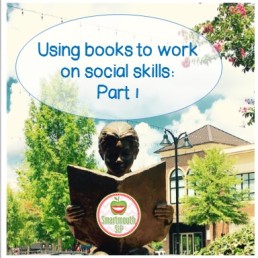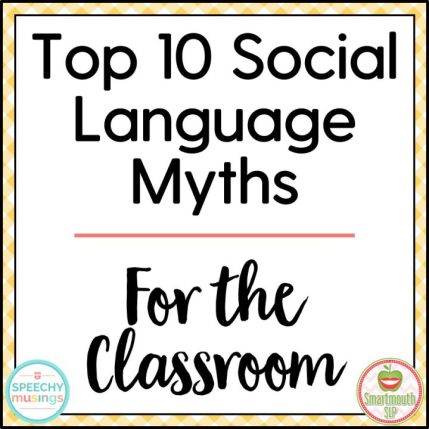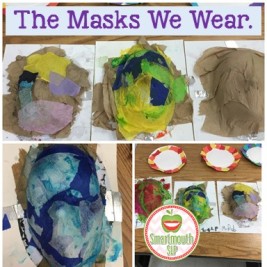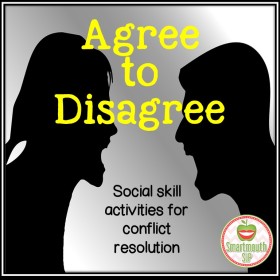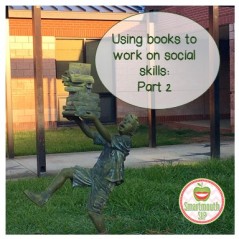
Last week, we talked about using books for social language concepts with younger students in part one of this series. This week, I want to talk about using literature to work on these concepts with your middle and high school students. I had the opportunity to be invited to at TPT brunch recently in Atlanta. (Side note: if the TeachersPayTeachers brunch rolls through your area, grab an invite and GO! There were so many great ideas shared and it was fun to connect with TPT people in real life!) One of the speakers was a fabulous local TPT teacher, Heather LeBlanc of Brainy Apples . She shared about how she uses literacy across the curriculum with her students. Our conversation sparked some ideas on how to use literature with my upper grade students with social language impairments.
Heather explained how she used The Diary of Anne Frank as part of the difficult unit on the Holocaust in her social studies class. In addition to the novel, she found some amazing resources in our local community through Kennesaw State University including the library lending actual materials (Traveling Trunks) from that period of history and providing connections to survivors of the Holocaust to come speak to students. How amazing to hear the story of someone who was witness to these historical events! From a social perspective, connecting a personal experience to our thoughts and feelings in deeper and more meaningful ways to words in a book is a powerful teaching tool.
Her great ideas caused me to think more about the literature that is used in our upper grades. The stories are often complex and require a lot of background knowledge to understand the stated themes as well as the more subtle ones that are woven through the books. For example, my own high schooler is reading A Raisin in the Sun. This story contains themes about dreams, hopes, racism, poverty, pride, family and suffering. These are concepts that often pose a challenge to our students with social language impairments, and frankly can be difficult for even our neurotypical students to understand. We often ask our readers to take the perspective of other people or experiences that our students haven’t had. Putting ourselves in someone else’s shoes is hard work socially!
Breaking down these bigger concepts into the basics of what the characters (and we as people) feel, think and say, can help us understand the character’s actions, motivations and point of view more accurately. Cause and effect (walking through this step by step), identifying problems and possible solutions and discussing how a character’s actions impact other characters in the story all have a social language basis. Graphic organizers are an effective tool to pull apart these social pieces for your students and there is a great set for free from The Curriculum Corner HERE . While this set is for 4th and 5th grade students, I use them with my older students with social language impairments as they are clear and organized well for the concepts. Take a look at the Common Core to see how much is already embedded in the classroom ELA standards for our beginning middle school students!
I love using the resources from Sparknotes and Schmoop to help my older students understand the themes and social meaning of stories. Schmoop even has a video summary (Schmoop tube), in a three-minute condensed version using student friendly language, of many of the literature units for middle and high schoolers. As I was Googling A Raisin in the Sun materials, I happened to stumble across this class assignment for students to develop a play list of music that would align with the themes of the story. What a great way to demonstrate understanding of these themes! You can get pretty creative in working on these skills but don’t reinvent the wheel, look around for lots of great ideas that are already available. Great SLPs (and teachers) work smarter not harder, right?
What are some ways you work on social language concepts with the upper grades ELA curriculum? Share here!
